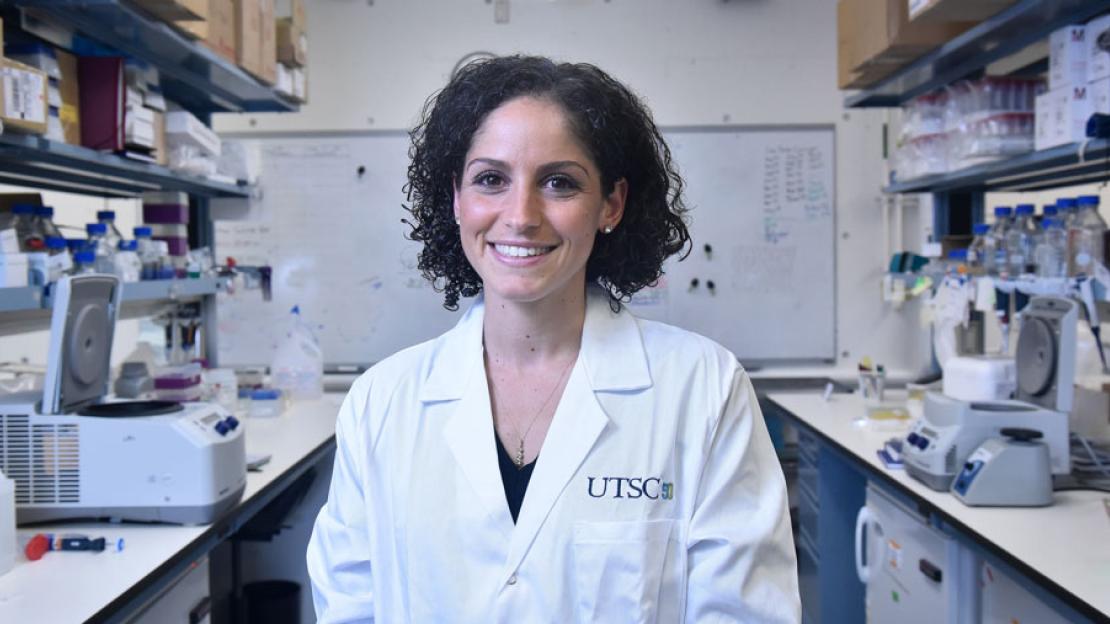The prospect of working in a room housing potentially-deadly pathogens would be an unpleasant one for most. But for Assistant Professor Christina Guzzo of the Biological Sciences department, it’s an exciting and essential part of her research.
Thanks to a recently awarded federal grant, she will be able to perform her cutting edge research on HIV pathogenesis right here on campus. Guzzo was named one of 30 recipients of the John R. Evans Leaders Fund, money that will support the infrastructure required to run one of the most robust labs on campus.
“I believe that my lab will operate under the highest biosafety containment level on our campus, as I’m fairly certain that no one else works with anything more pathogenic than live HIV cells,” says Guzzo.
Biosafety levels are standards created by the Centers for Disease Control and Prevention (CDC). They rate laboratories on a scale of one to four, where Biosafety Level 4 (BSL-4) labs require the strictest adherence to safety guidelines, and are reserved for those working with extremely dangerous pathogens.
Guzzo’s lab is currently being constructed according to these standards, with an outer BSL-2 lab being built around an inner-chamber that is almost BSL-3 compliant. She has nicknamed this her “biosafety three minus” lab within a lab.
“From [the inner lab] you can take proteins or cell extracts from HIV-infected cells and safely work with them in the level two lab because now there’s nothing infectious that can transmit disease,” she says.
Recently, Guzzo’s research has focused on how the infection attacks gut cells and disguises itself with proteins naturally present on the surface of host immune cells. Her current research is focused on unraveling the molecular mechanisms of this phenomenon, and aims to discover new, undefined immune proteins that may also be taken advantage of to support viral replication.
Guzzo also explained that, in the broad field of highly pathogenic infections, HIV is one of the least threatening diseases that is commonly studied. In fact, her BSL “three minus” lab will have more safety precautions in place than what is technically required.
“I think people are very scared of the virus because it’s something that we don’t have a cure for but it is something that you can work with relatively easily in a lab environment. It’s not like Ebola where you need level four biosafety. The mode of transmission is through blood and other infected bodily fluids that need to find a way into your body. The HIV virus isn’t aerosolized, you can’t cough and spread it, and you can kiss or hug or share meals safely with a person who is HIV-infected,” she says.
Guzzo is also deeply passionate about the influence that HIV stigma has on public policy and other social hurdles that HIV positive people are needlessly forced to encounter every day, like the Immigration and Refugee Protection Act section 38 – which makes immigration applicants inadmissible based on HIV positive status.
“I think there’s a lot of stigma around HIV infection that mostly stems from the fact that it’s incurable, and that roughly 37 million people around the world have it, but in fact it’s a really hard virus to transmit. The rate of transmission is very low through everyday forms of contact,” says Guzzo.
For Guzzo, spreading the word about medical advancement is essential not only because of her own line of work, but because she also recognizes that as breakthroughs are made in HIV treatment, we must also adapt how we treat people with HIV socially.
“A big misconception exists whereby people think that HIV is a death sentence. Many people have lived up to 50 years or so after being diagnosed,” she adds.
“Any young Canadian who is diagnosed early and adherent to antiviral treatment can live a long, fulfilling, and relatively ‘normal’ life. In the long term, our research will provide new ways to extend the lifespan of HIV-infected individuals, and ultimately, aims to contribute knowledge to the ongoing quest for effective HIV vaccine and cure strategies”
